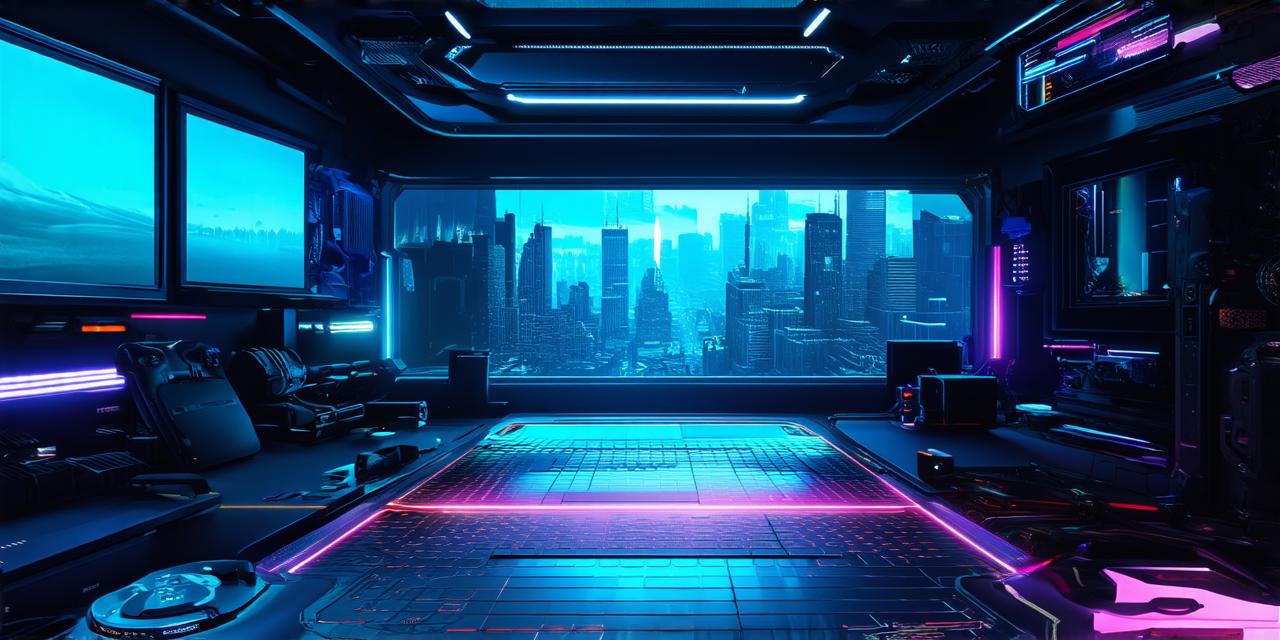Introduction:
Virtual Reality (VR) has revolutionized gaming and entertainment by offering immersive experiences that transport users into virtual worlds. With the rapid advancements in technology, game development in VR is becoming more accessible to developers of all skill levels. However, developing a successful VR game requires careful planning and execution.
1. Define Your Target Audience:
The first step in game development is to define your target audience. This includes understanding their age range, interests, and preferences. For example, if you are developing a horror game, your target audience may be young adults who enjoy scary movies and games. On the other hand, if you are developing a puzzle game, your target audience may be older adults who enjoy challenging themselves mentally.
1. Choose Your Game Engine:
Once you have defined your target audience, the next step is to choose your game engine. There are several VR game engines available, including Unity, Unreal Engine, and A-Frame. Each engine has its own strengths and weaknesses, so it’s important to choose the one that best fits your needs.
1. Create an Engaging Storyline:
A successful VR game requires an engaging storyline that keeps players immersed in the virtual world. This includes creating a compelling narrative, designing interesting characters, and developing a strong plot. It’s also important to consider pacing and flow, ensuring that the story is engaging from beginning to end.
1. Focus on User Experience:
User experience (UX) is critical in VR game development. This includes designing an intuitive user interface, optimizing for performance, and ensuring that the game is accessible to all players. A seamless UX can help improve player satisfaction and increase engagement.
1. Optimize for Performance:
Optimization is crucial in VR game development, as even small delays or frame rate drops can cause motion sickness and decrease player immersion. This includes optimizing graphics, reducing load times, and minimizing the number of assets on screen at any given time.
1. Test and Iterate:
Testing and iteration are essential in VR game development. This includes playtesting with a diverse group of players to gather feedback and identify areas for improvement. It’s important to continuously iterate on your game until it meets the needs of your target audience.
Case Study: Beat Saber
Beat Saber is a popular rhythm game that has become a staple in VR gaming. The game was developed by Beat Games and released in 2018 for Oculus Rift and HTC Vive.
One of the key factors behind Beat Saber’s success is its focus on user experience. The game’s intuitive UX, combined with its engaging storyline and immersive audio, has helped it become one of the most popular VR games to date. Additionally, the game’s developers have continuously iterated on the game, adding new songs and features based on player feedback.
Expert Opinion:
According to John Carmack, co-founder of id Software and lead developer of DOOM VR, “The key to successful VR development is understanding what makes VR unique. This includes creating experiences that are truly immersive and engaging, and taking advantage of the unique capabilities of the platform.”
Comparing to Traditional Gaming:
Compared to traditional gaming, VR game development requires a different set of skills and strategies. While traditional games often rely on storytelling and character development, VR games must also focus on creating an immersive environment that transports players into virtual worlds. Additionally, VR games must be optimized for performance, as even small delays or frame rate drops can cause motion sickness and decrease player immersion.
FAQs:
Q: What are some common challenges in VR game development?
A: Some common challenges in VR game development include creating an engaging storyline, optimizing for performance, and designing intuitive user interfaces. Additionally, developing for multiple platforms can be a challenge due to differences in hardware and software requirements.
